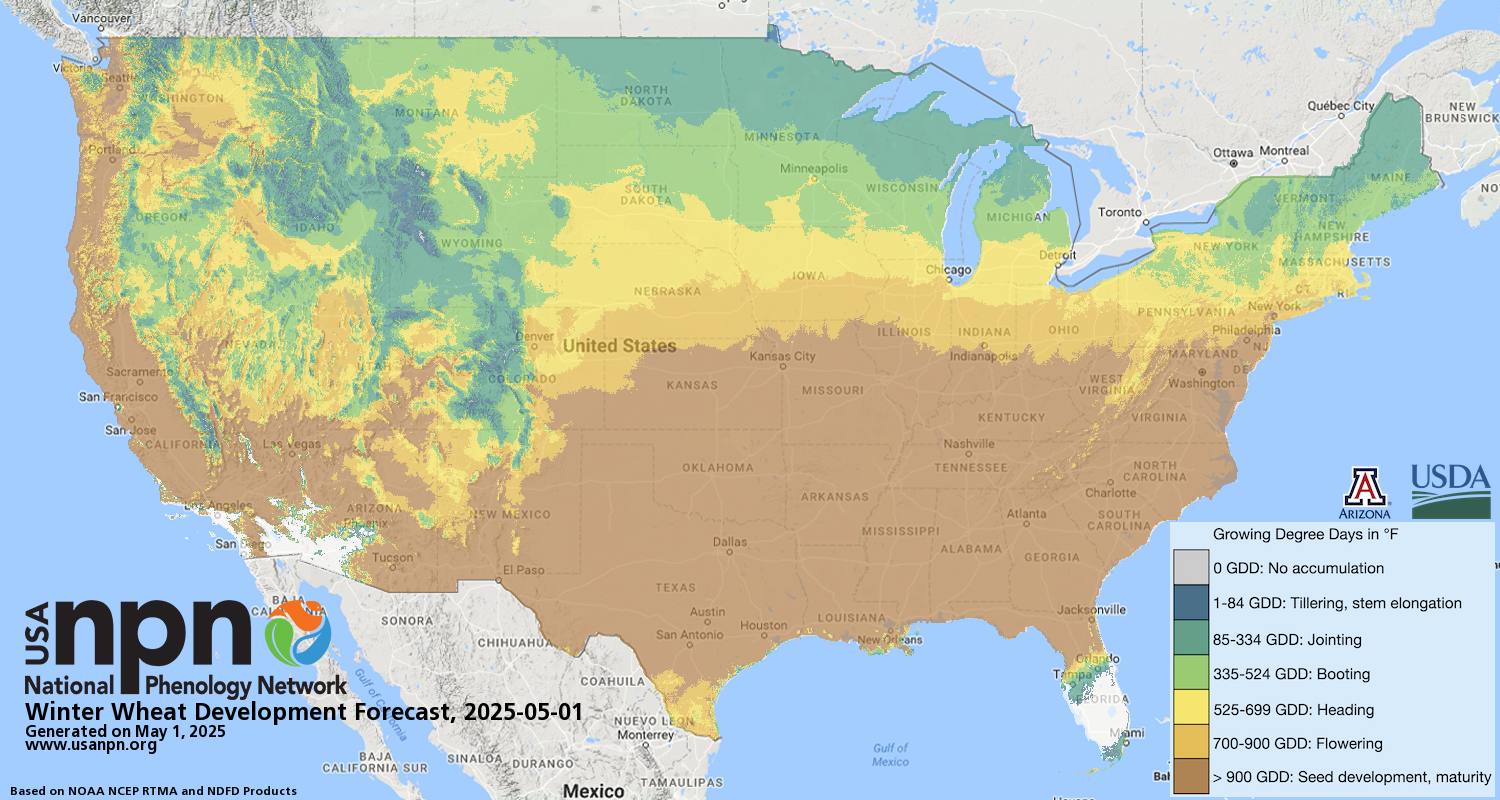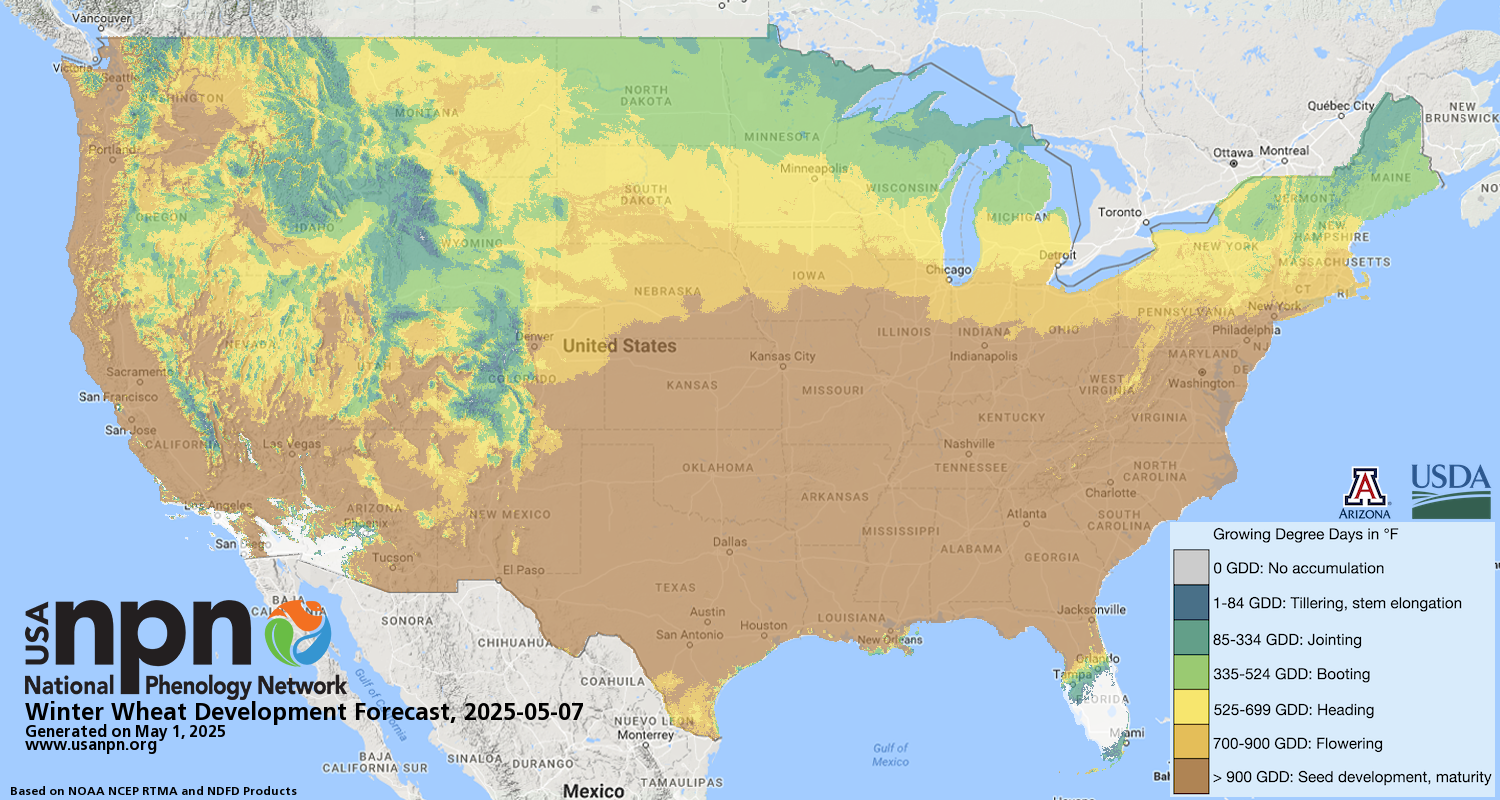Due to technical difficulties, this Pheno Forecast is not currently being updated for 2025. Please check back next year for updated map status.
Winter wheat is vulnerable to freezing temperatures once it resumes growth in the springtime.
WHAT ARE PHENO FORECASTS?
The USA-NPN winter wheat development Pheno Forecast indicates the approximate developmental stage of winter wheat plants based on daylength and recent temperature conditions. These maps are updated daily and available 6 days in the future.
Help us improve these maps! Our Pheno Forecast map products are still in development, and we seek input on their performance in your area. Give your feedback at the bottom of the page.
Winter wheat is typically planted in the autumn. The plants germinate in late fall, overwinter as young plants, and resume growth in early spring. Winter wheat is cold tolerant in the overwintering vegetative phase but becomes sensitive to freezing temperatures once growth resumes in the spring (Shroyer et al. 1995). Plants are most sensitive to cold during reproductive growth, in booting and heading stages. At these stages, temperatures just below freezing can severely injure plants and greatly reduce grain yields.
The USA-NPN winter wheat development forecast can indicate whether plants at a particular location are likely to suffer damage due to sub-freezing temperatures.
Winter wheat developmental forecast
The USA-NPN winter wheat development forecast is based on the CERES-wheat model (Ritchie 1991), which predicts developmental stage using temperature, sun angle, and varietal inputs. The USA-NPN winter wheat development forecast assumes emergence has happened in the fall, and begins heat accumulation on January 1st to predict spring crop development. The forecast approximates across varieties to provide a general forecast for winter wheat development, which may reflect developmental stage in some varieties more closely than others. Developmental stages are estimated using accumulated growing degree days using the simple averaging method (base 32F, upper threshold 78.8F). We assume that plants have accumulated 1265 growing degree days (GDD) prior to winter and start GDD accumulation from this point on Jan 1.
EXPLORE THIS FORECAST
Learn more about this forecast using our visualization tool!
|
Developmental stage |
GDD accumulation |
|
Tillering, stem elongation |
0-84 |
|
Jointing |
85-334 |
|
Booting |
335-524 |
|
Heading |
525-699 |
|
Flowering |
700-900 |
|
Seed development, maturity |
>901 |
These forecasts have been created with support from the USDA Climate Hubs and the Office of the Chief Economist.
More information on map development and re-use policy.

